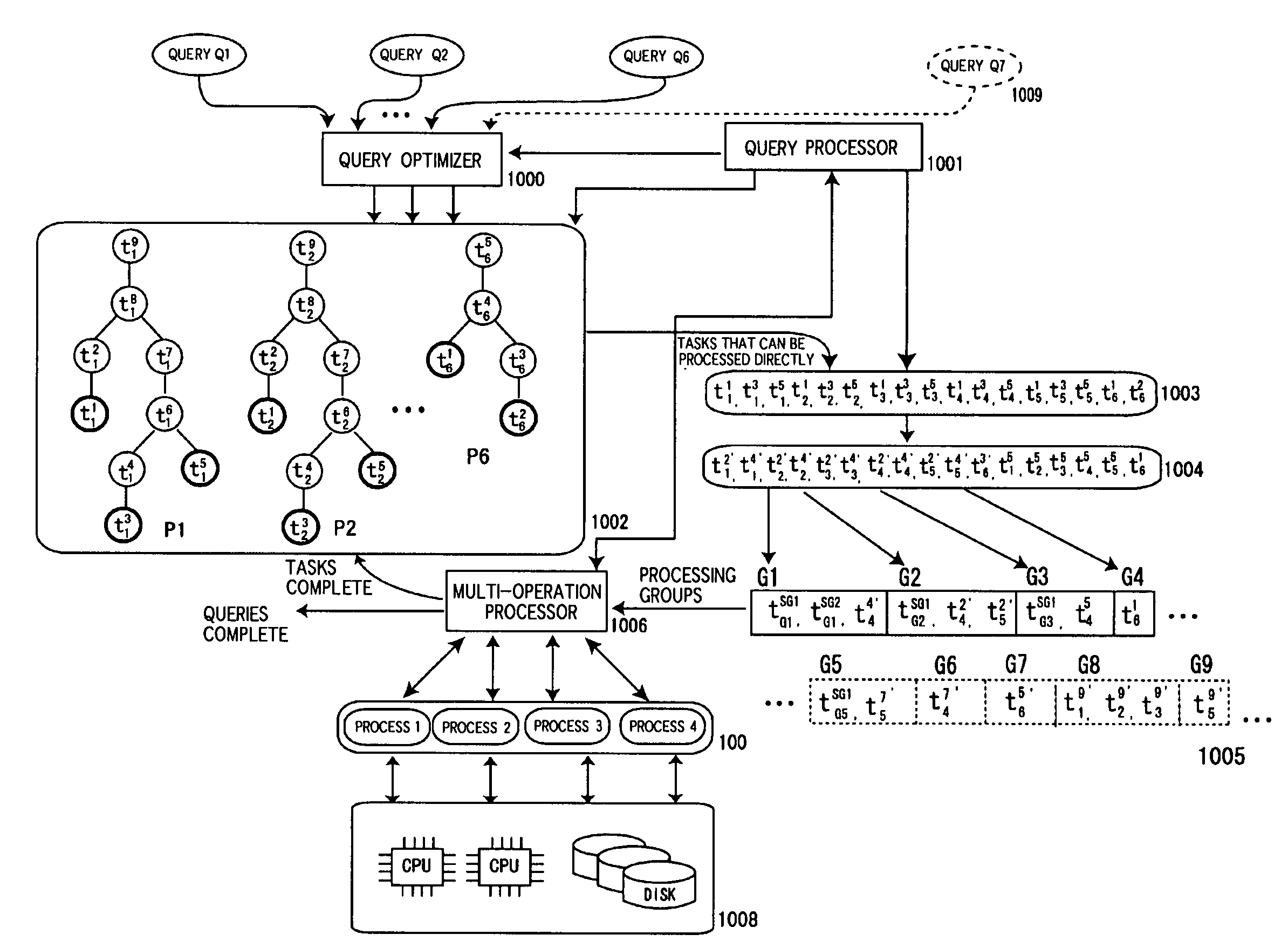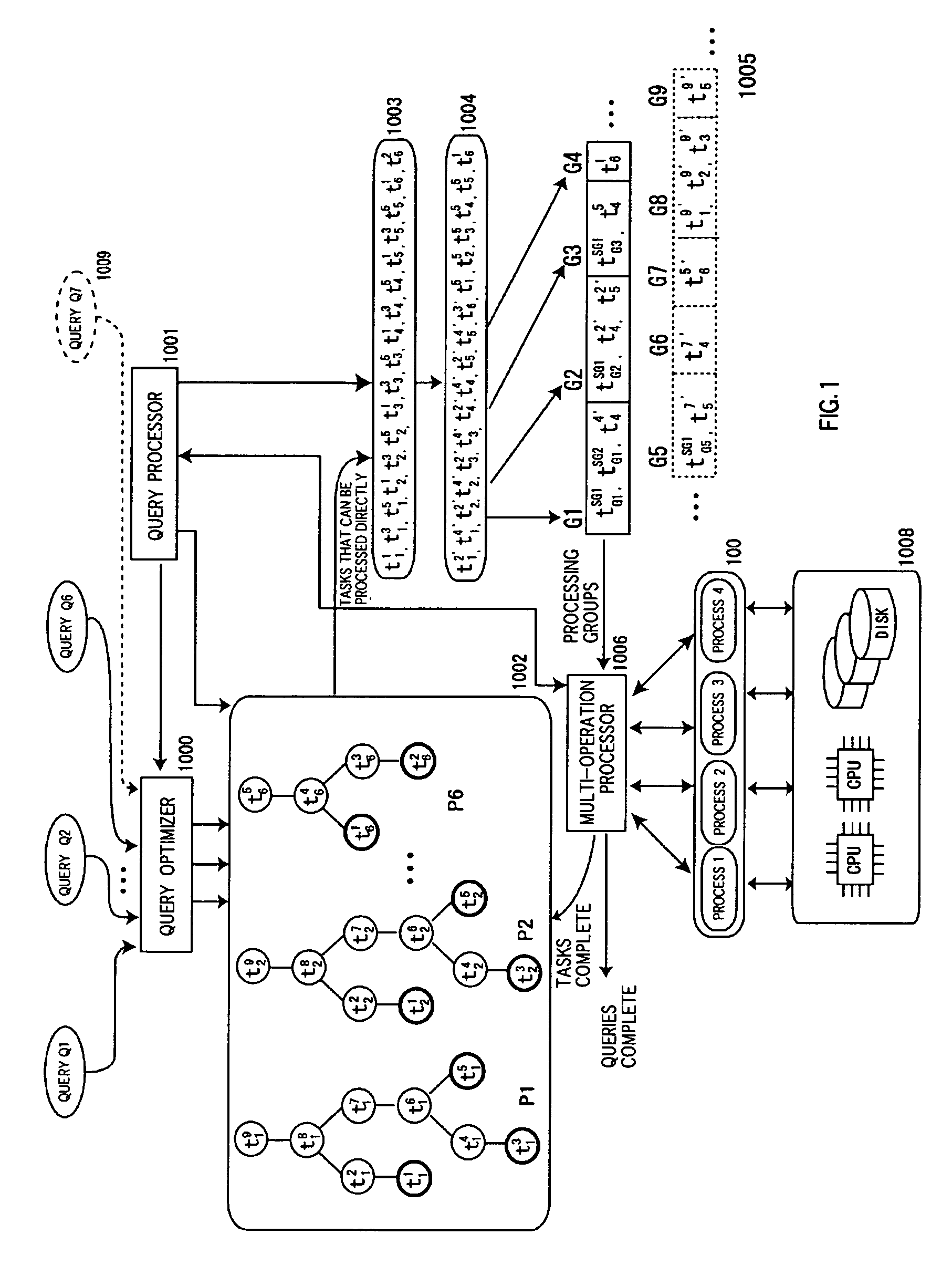Query processing system of a database using multi-operation processing utilizing a synthetic relational operation in consideration of improvement in a processing capability of a join operation
a technology of query processing system and join operation, applied in the field of query processing system using multi-operation processing system utilizing a synthetic relational operation, can solve the problems of inefficiency, query processing speed decrease, query processing speed drop, etc., and achieve the effect of improving the processing capability of join operation and reducing the number of disk accesses
- Summary
- Abstract
- Description
- Claims
- Application Information
AI Technical Summary
Benefits of technology
Problems solved by technology
Method used
Image
Examples
Embodiment Construction
[0107]As solution to the problem (1), the inventors of the present invention proposed “query processing system of database using multi-operation processing” (JP2006-356406) to reduce the number of accesses to secondary storage device such as disk and improved the query processing speed.
[0108]In the proposed multi-operation processing, when multiple tasks from query trees perform operations on a common relation of a database, the proposed multi-operation processing
[0109]collects these tasks into a group for each relation,
[0110]creates an access plan for each task in the group,
[0111]calculates a processing cost of each task in the group based on the access plan,
[0112]sorts the tasks in the group based on the processing cost,
[0113]finds blocks (address of the blocks) that need to be accessed in the common relation for processing these tasks in the group,
[0114]determines a block access order of the blocks based on the sorted order of the tasks,
[0115]reads a block from disk as a common b...
PUM
 Login to View More
Login to View More Abstract
Description
Claims
Application Information
 Login to View More
Login to View More - R&D
- Intellectual Property
- Life Sciences
- Materials
- Tech Scout
- Unparalleled Data Quality
- Higher Quality Content
- 60% Fewer Hallucinations
Browse by: Latest US Patents, China's latest patents, Technical Efficacy Thesaurus, Application Domain, Technology Topic, Popular Technical Reports.
© 2025 PatSnap. All rights reserved.Legal|Privacy policy|Modern Slavery Act Transparency Statement|Sitemap|About US| Contact US: help@patsnap.com



